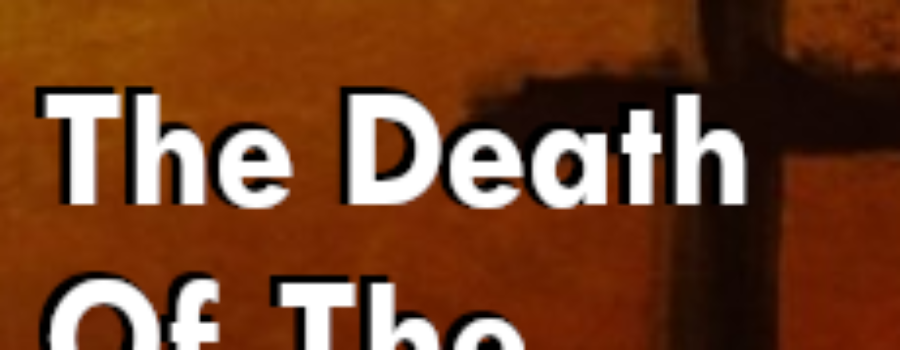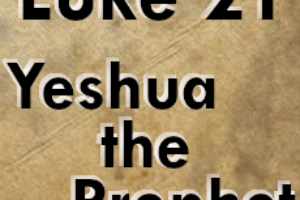We wrapped up Luke 22:66-71 with the Sanhedrin giving their official charge against Jesus. They had condemned Him to death on the basis of blasphemy. This is a serious charge that required the death penalty under the Jewish laws. However, the Jew’s ability to execute on this charge was removed by Rome earlier that year. The Jewish leaders had a problem, they needed to prove that Jesus did something that was deserving of death under Roman law. If the trial had occurred six months earlier, the Jews would have been able to execute Jesus without involving Rome. How interesting it is that this change occurred.
The Roman Civil Trial
Once the leaders bring Jesus before Pilate, they list three charges that could be interpreted as treason in Luke 23:1-2:
- Misleading the nation
- Forbidding them to give tribute to Caesar
- Proclaiming Himself to be the Christ and king
In all actuality, Jesus is doing the opposite of the first two charges. He consistently brings the people back to the proper interpretation of the Mosaic Law, and with regard to the second charge, Jesus said the opposite! Unlike the Jewish leaders, Pilate doesn’t interpret Jesus claim as any threat to the Roman Emperor. He claims:
“Then Pilate said to the chief priests and the crowds, “I find no guild in this man.”
Luke 23:4 ESV
Upon hearing this they urge him more, and mention that Jesus was form Galilee. This gives him an opportunity to send Jesus to Herod. Herod happened to be in Jerusalem at the same time, likely due to the Jewish holiday. However, no matter how much Herod questioned Jesus, he recieved no answer. All he could do in the midst of the accusations of the Jews was to mock Jesus and treat him with contempt and send him back to Pilate.
Pilate is now found in a pickle. Neither him or Herod see any reason to condemn Jesus to death. However, when Pilate attempts to release Jesus, the Jews cry out for Barabbas to be released. What is interesting to note in Luke 23:19 is that Barabbas was GUILTY of the very things the Jews accused Jesus of doing, insurrection and rebellion. Yet Jesus takes his place on the cross.
The Road to the Crucifixion
As Jesus is led to the place of His crucifixion, there is a mob of people following him, with “women who were mourning and lamenting for him.” This was part of the middle eastern tradition of professional mourners. These “professionals” give a loud voice to a funeral. Jesus was not a fan of this profession, as he rebuked the mourners at the synagogue ruler’s house just before he raised the young girl from her death. This time, in speaking to them, he tells them that they should bewail the events to come and he prophecies about the coming destruction of Jerusalem in 70 A.D. He ends this prophecy in Luke 23:31 with:
“For if they do these things whit the wood is green, what will happen whit it is dry?”
LUke 23:31 ESV
This is a Jewish idiom that means; if the innocent suffer this much, how much more will the guilty suffer. Jesus is basically telling them that those who rejected Him as the Messiah will suffer more. One only needs to study history to see the vivid descriptions of what happened in 70 A.D.
The Crucifixion
As Jesus arrives to “the place that is called The Skull, there they crucified him and the criminals, on on his right and one on his left” (Lk. 23:33). It is likely that these criminals were associates of Barabbas, whom Jesus replaced. This is in fulfillment of Isaiah 53:12, that the Messiah would be “numbered with the transgressors; yet he bore the sin of many”.
Jesus makes a powerful statement of prayer for the Roman soldiers assigned to preform the gruesome task of hanging the Messiah on a cross:
And Jesus said, “Father, forgive them, for they know not what they do.”
Luke 23:34 ESV
Notice that Jesus does not pray for the Jewish leaders, why? Because they knew exactly what they were doing. The Jewish leaders knew He was innocent, yet they pushed for Him to die. Jesus is praying for those who are doing their job out of ignorance.
Satan’s Last Trial
Luke records three mockeries of Jesus while He is on the cross. All of which have two common elements challenging Jesus to prove His Messiahship. “If you are the King of the Jews, save yourself!” (Lk. 23:37)
This was Satan’s last ditch attempt to keep Jesus from completing the work of the cross. The role of the devil is to seek, kill and destroy anything or anyone that would achieve what he cannot, God’s forgiveness. By keeping Jesus off the cross, he would have prevented the atonement for our sins.
But Jesus is faithful!
Instead of giving into the pride that would have taken over by proving His Kingship and coming down from the cross, He remains there. In doing so, Jesus actually does what they are asking. By remaining on the cross, Jesus proves His Messiahsip because the first advent of the messiah is one of suffering and death for the sins of the world (read Isaiah 53 and Psalm 22 if you think otherwise).
A Profession of Faith
There’s a lot that can be said looking at the death and burial of Jesus. However, I want to close out today with the profession of faith by one of the condemned men. This is shown in Luke 23:40-43. In these four verses we see a man guilty of crimes worthy of the cross acknowledge his sinful estate, confess the need for forgiveness, recognize that Jesus lived a sinless life, and finally call out to Jesus for forgiveness.
These are the core tenants of what we all need to do. And in doing so, we have God’s forgiveness of our sins and a personal relationship with Him. If you haven’t asked for God’s forgiveness, I encourage you to do so today. And if you have, take heart that the same message Jesus gave to this man will one day apply to you. That one day you will be with Him in paradise.





